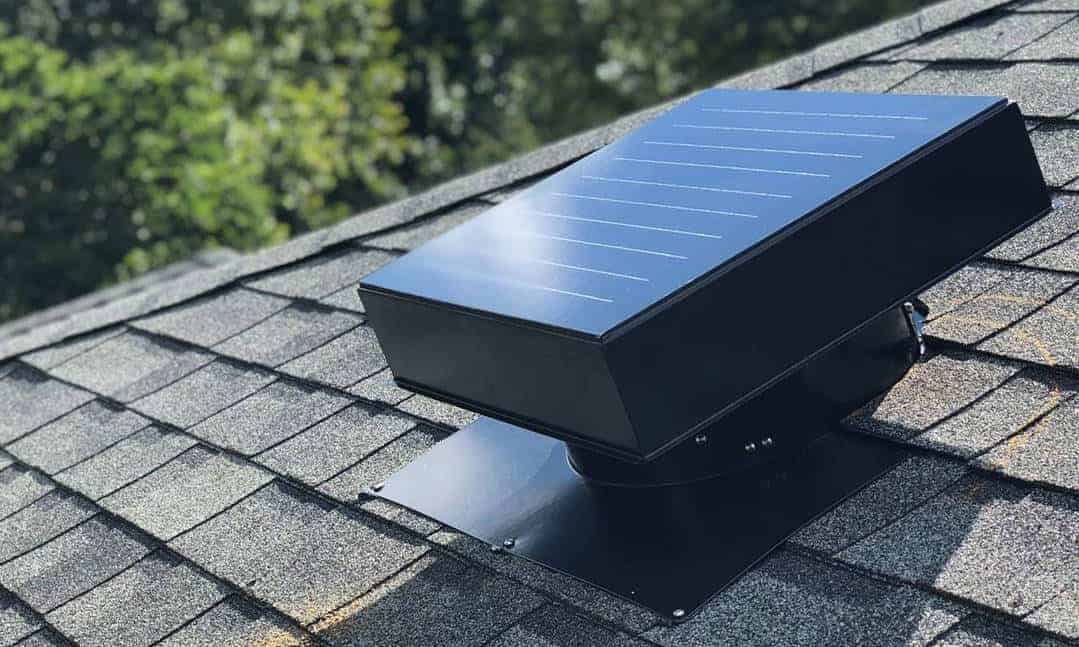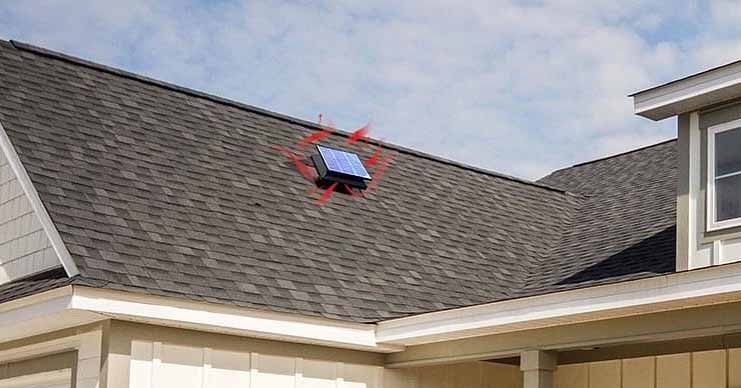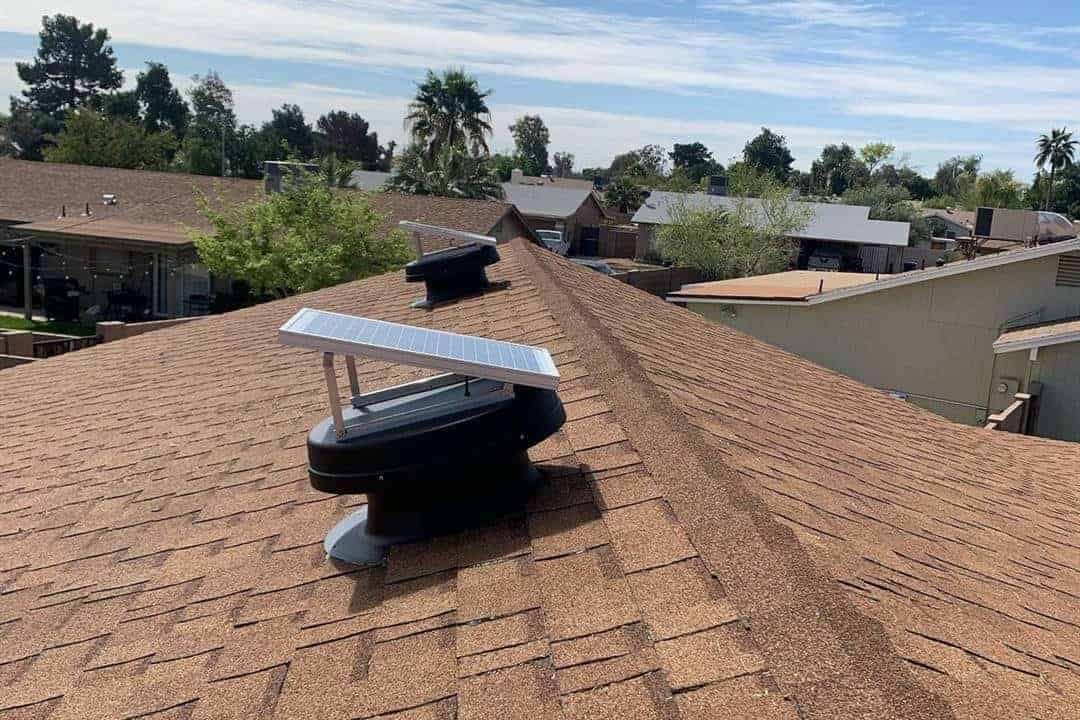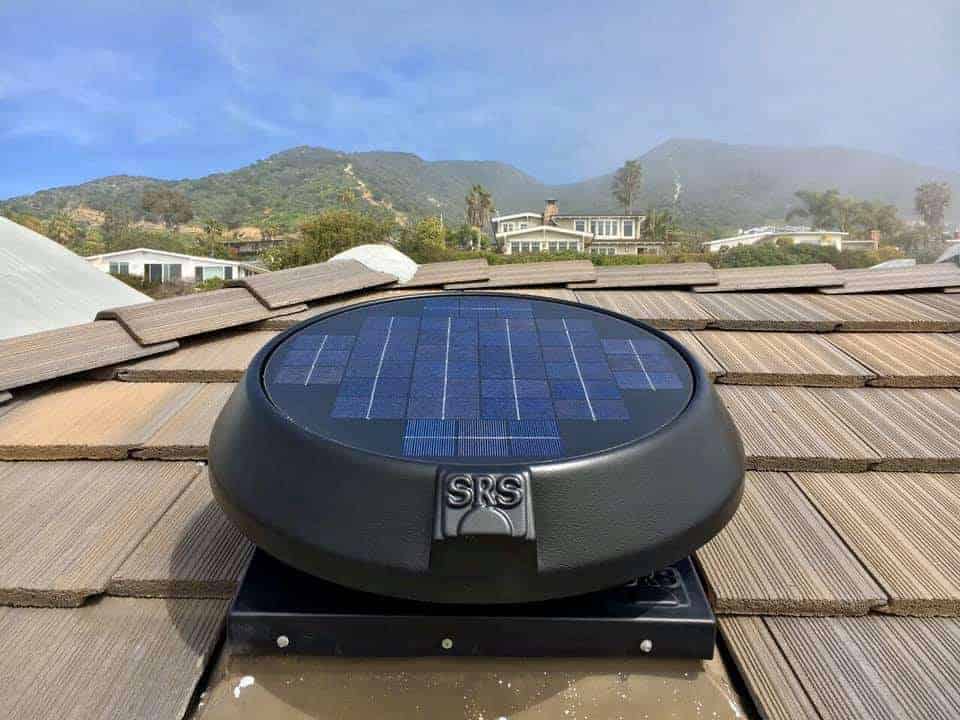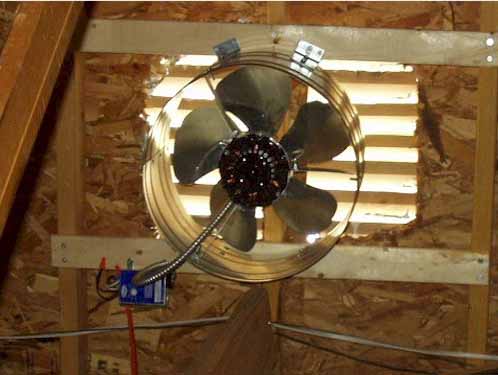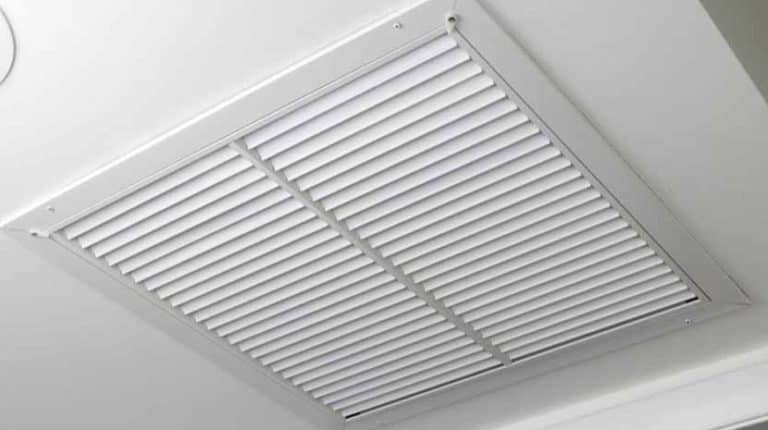Solar attic fans are a contentious issue. Some people claim they offer considerable energy savings and other benefits. Others aren’t so sure, pointing out drawbacks and questioning whether installing this technology in your home is a justifiable investment.
Here I’ll go through all the pros and cons of solar attic fans, explaining how they work and what everything means. Armed with all this information, you will find it easy to decide if a solar attic fan is worth it.
What is a solar attic fan?
You install a solar attic fan to do two jobs. The first job is to lower attic temperatures by venting out hot air and drawing cool air back in. The second task of a solar attic fan is to keep your attic dry. Let’s look at how an attic fan performs these tasks.
How solar attic fans work
A solar attic fan consists of a roof-mounted solar panel that converts light energy from the sun into electricity which powers an electric fan on your roof. As long as direct sunlight is powering the solar panel, this fan will draw air out from your attic. But the fan won’t work at night or under very cloudy conditions.
The attic air that this fan vents out is replaced by cooler air drawn into your attic through soffit ventilation. You probably have some of these already since you’ll find soffit vents in the eaves of most houses.
This ventilation is a vital part of a solar attic fan system, and if your home doesn’t have adequate soffit ventilation, your solar attic fan system won’t work. You will need around eight square feet of screened soffit vent per solar attic fan.
During hot summers, your solar fan removes superheated air from the top of your attic and draws cool air in, lowering temperatures and cooling the rooms below. In the cooler months, an attic solar ventilation system continues to provide airflow through your loft space, taking out still air and replacing it regularly.
Benefits of solar attic fans
Advocates of solar attic fans point to several benefits over alternative options and not installing them at all.
Reduced attic temperatures, Energy savings, and a cooler home
There are lots of before and after tests that prove the effectiveness of solar attic fan systems in lowering attic air temperatures. A cooler attic cools your home’s ceilings and reduces the burden on your air conditioning system, saving you money. This is the principal reason for installing solar attic fans.
Protection from damp
During winter and in the cooler months, humid, still air in your attic causes problems. Wet air condenses on surfaces calling causing mildew, dampness, and water damage. But a solar attic fan keeps a regular airflow that takes out the damp air and replaces it with cooler air, effectively drying everything
No ongoing costs
You’ll have to spend some money to buy and install your solar attic fan system. But after this initial investment, you won’t need to pay a cent. Solar technology means that the system will generate all the power that it needs, so there won’t be any fuel costs for the whole working life of your solar attic fan system.
In principle, you can enjoy regular savings on your energy costs and also reduce the costs of home repairs caused by water damage that the fans prevent.
Government incentives
Solar energy is a growing technology heavily supported by federal and local governments. When you’re shopping for solar attic fans, check to see if there are any government rebates available. There’s a good chance that you can lower your investment costs by taking advantage of a government incentive to buy solar.
Criticisms
Solar attic fan systems do have some drawbacks. When deciding if a solar attic fan worth it, it’s essential to consider the potential downsides and see if they apply to your situation. After all, when you know what can go wrong, you can make sure it doesn’t.
Solar attic fans draw cool air up through the ceiling of your house.
One drawback of solar attic fans is that you need an airtight seal between your home and your attic to avoid the fan drawing cool air from your house up through gaps in the ceiling into the attic.
This would cause a problem since one of the main arguments for having a solar attic fan is to reduce the workload on your air conditioning. If it turns out that your aircon is cooling air that is then drawn into your attic, then the systems achieve the opposite of what you want.
Solar attic fans are expensive
Most solar technology has a relatively high investment cost.
A typical solar panel costs around $300. By the time this is set up and installed, that cost has probably risen to $500. And you can double this for larger homes that need two solar fans.
So a home solar attic fan system costs you quite a lot of money to install; there’s no denying that.
But you need to compare these initial costs against energy and maintenance savings over the fan system’s expected life. The way that you work out the cost-effectiveness of your system is by calculating the payoff period as follows,
Payoff period = initial investment (less government incentives) ÷ annual energy savings
Estimates put the standard savings from installing solar attic fans at around $100-150 per year. So a $500 attic fan system will pay itself off in the fourth year of operation.
Many attic fans offer a fifteen-year warranty. If you’re concerned about the expense of your attic fans, then buy ones with a longer warranty period so you can expect many years of energy savings after you’ve paid off the initial cost.
Solar-powered fans don’t generate enough energy to be useful
An argument suggests that a rooftop solar panel doesn’t generate enough power to drive an electric fan long enough to make a difference to your loft temperatures and that mains-operated alternatives provide a better solution.
It’s true that solar fans only work in the daytime, but you need to remember that solar panels can still work even when it’s cloudy by collecting indirect sunlight. So a solar fan with a large and efficient solar panel will work throughout the day.
Also, remember that it’s during direct sunlight that your attic gets hottest as the sun beats down on your roof. So the times that your solar attic fan system is working hardest are when it’s most needed, providing a neat and effective solution.
Recommended to read: How Many Solar Attic Fans Do I Need?
Attic fans can cause damp
Some critics suggest that since installing a solar attic fan involves making a hole in your roof; it poses a risk of leakage. This all comes down to the installation; as long as your solar attic fan is installed by a competent professional, you have no reason to expect it to become a source of leaks.
Alternatives
Electrically powered roof fans
Mains-connected attic roof fans are cheaper than solar-powered units. But they incur electricity usage costs, so you need to decide if the price of cooling your attic is justified by the savings from reduced aircon usage downstairs in your house.
Solar attic fans don’t have this problem. A good compromise option is a hybrid solar fan that uses solar power when available and then switches to the main supply on the, hopefully, rare occasions when that’s required.
Standard air vents
If your home is well ventilated and has good soffit venting, then you may be able to create a cooling airflow just by installing rooftop vents.
Hot air rises, so as long as there is a ready supply of cooler air entering the base of your attic, there will be natural air circulation. This may allow you to cover your attic naturally without the need for expensive solar attic fans.
These systems aren’t as powerful as solar attic fans, but it’s worth considering if you’re unable to deal with one of the aforementioned issues. Having some form of attic ventilation is better than none.
The Verdict
There is little doubt that solar attic fans have the potential to offer you energy savings over a long period. Equally, a poorly installed system is as good as useless. You can take steps to avoid the potential pitfalls of a bad solar fan installation and make sure that you put in a system that does what you want it to from the start.
The table below summarises how you can anticipate and solve potential problems with a solar attic fan installation and enjoy the undeniable benefits and cost savings.
| Issue | How to deal with it | |
| 1 | Solar attic fans are expensive | 1 -Check what rebates are available
2 – Buy fans with an extended warranty
|
| 2 | Not enough ventilation | Make sure you have enough soffit fan vents
|
| 3 | Cool air is drawn in from your house | Make sure that your loft is airtight
|
| 4 | The solar panel doesn’t produce enough energy | 1 – make sure you position the solar panel well
2 – make sure you buy enough solar fans 3 – consider hybrid solar/mains fans
|
| 5 | Solar fans can cause damp | Make sure a competent professional installs your system
|
| 6 | Alternatives are available | 1 – hybrid solar fans can be a good option in cloudy climates
2 – standard air vents are fall back option if you are unable to solve some of the issues above, but they won’t offer the savings of solar attic fans.
|
If you have any comments or questions about is a solar attic fan worth it, please share them here.

